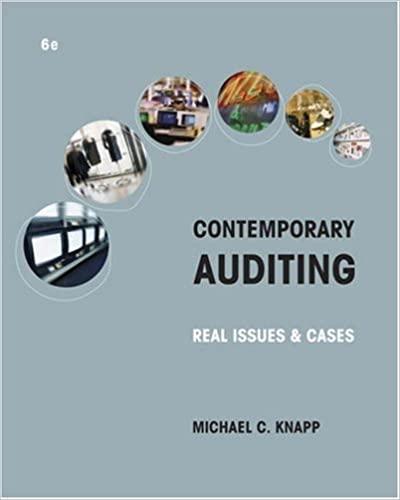Need help !!!

is an ethical violation and the nature of the violation. Include a 1 For each of the following, explain whether or not there citation of the rule or principle violated (as applicable). Remember, the PCAOB rules are added to the AICPA Code of Professional Conduct rules for publicly traded companies. a. Scott CPA, provides tax-services for an audit client whose shares are publicly traded. b. Fran Martino is a CPA but not a partner of the firm. Her firm audits Scott Company, a public traded company and she works on the audit. She owns 1 share of the common stock of Scott Company. The one share is worth less than S10 and is immaterial to her net worth. She justifics her holding the one share because she receives information from Scott in the form of documents sent to the holders of their publicly traded shares. Scott audits Makamson Company. Scott is the lowest bidder on the audit and to minimize audit risk, included a clause in the engagement letter (the audit contract) prohibiting Makamson's stockholders from suing Scott in the case of audit failure. Scott explains that this will help Scott keep audit fees lower and, in the long run, save Makamson money and, therefore, improve the shareholders' return. Scott is a CPA and works on the audit of Big Consolidated Bank. Wanting to buy a house, Scott goes to the loan manager of Big Bank, who he knows through the audit, and explains that he wants a loan. The manager introduces him to loan manager at the local branch who handles the loan. The interest rate and other terms on the mortgage are comparable with Big Bank's competitors c. d. e. Nina's audit client is Semantha Corporation. Semantha has a large material investment in PoleAxx Industries,a large local provider of organic foods. Semantha produces Apple Mash and sells most of its Apple Mash to PoleAxx. Nina's parents are employees of PolcAxx and most of their retirement funds is invested in PoleAxx equities. Nina is not dependant on her parents for support and does not expect to inherit much in the far distant future For cach of the following situations, explain what law or rule was (or may have been) broken, whether the auditor is liable and what defenses may be used by the auditor in his defense: Scott audited Dima Corporation and gave an unqualified opinion on the financial statements. financial statements, Dima performed an initial public offering. Dima immediately suffered reverses and declared bankruptcy less than three months later. The purchasers of the IPO stock sued both Dima and Scott. There is evidence that the financial statements were materially misstated and Scott did not detect the material misstatements. None of the plaintifs' can show any evidence that they read or understood the financial statements. Scott audited Nina Inc. and, during the audit, discovered material misstatements related to inventory and depreciation expenses. Nina explained that she needed the audit to secure bank loans. Nina explains that the company is in danger of going under and that literally hundreds of workers are financially dependent on the survival of the company and will suffer great financial harm if Nina goes bankrupt. Nina also explains that if the company can survive for a few more weeks, it will prosper as the economy improves and business picks up. Scott is sure this is true and is already seeing signs that Nina's business is improving. Scott issues a Qualified Opinion explainin about the two misstatements and adds a paragraph explaining that the firm has a going concern, problem dependent on Nina getting a loan. Two weeks after issuing the opinion, Nina gets the loan and retires to parts unknown with most of the company's cash and the company folds. Scott is sued by the bank. Nina audited Pepper Company and failed to find the defalcation of many tens of thousands of dollars. dollar amount of the fraud does not threaten the company's ability to pay its debts and continue operations, the bad publicity adversely affects Pepper's stock price. The fraud consisted of using Pepper's new and innovative automated accounting system to pay non-existent invoices. The nature of the fraud was so new and unique that the industry was intrigued to study the issue and to develop new controls to prevent similar events. That is no other a. Using the audited b. Although the c








